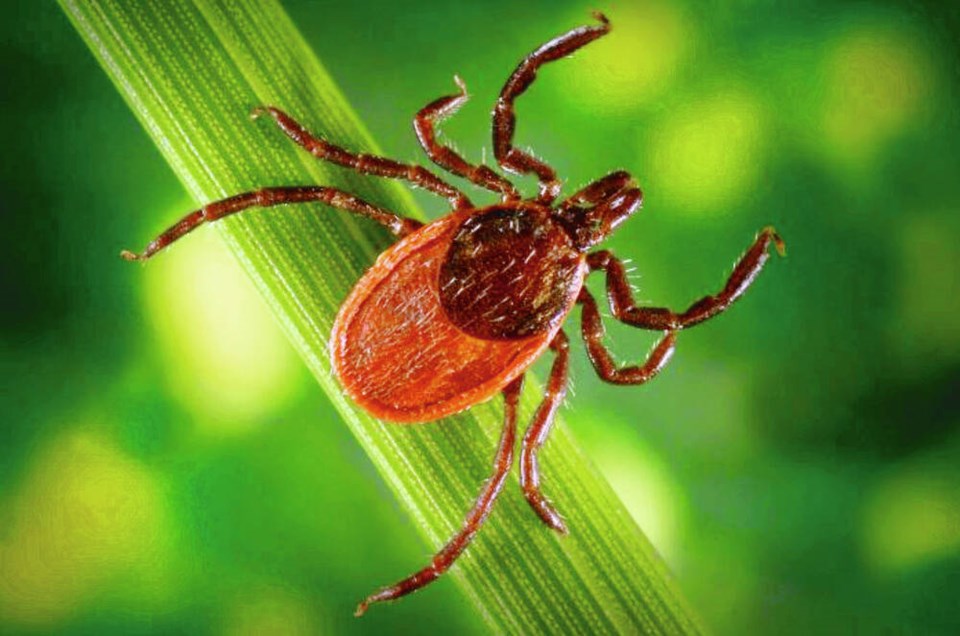It’s peak tick season, and the usual tick-inspired fashion statements have appeared on the trails.
The shirt-tucked-into-pants look doesn’t raise anybody’s eyebrows, but the pants-tucked-into-socks look is almost always a giveaway that somebody is more concerned about tick bites than sartorial splendour.
Of course, in the balmy climes of south-coastal sa国际传媒, the nerdy anti-tick hiking look would be appropriate at any time of year. Despite peak season occurring from about March to June, the insects can be found year round in this region.
One of the biggest of the many problems with ticks is they need the protein in blood. To get it, they bite animals and people.
A tick is out for blood during two stages in its life. As a juvenile, it needs blood to develop and mature. It’s during this bloodmeal that a disease-free tick may acquire any of the pathogens we don’t want passed along to us.
Mature ticks also need blood to develop eggs to make more ticks. It’s during this second meal that ticks can pass pathogens they carry along to who or whatever is providing the meal.
Another of the big tick problems is the smorgasbord of nasty diseases the insects can carry. According to the U.S. Centers for Disease Control and Prevention (CDC), ticks are confirmed or suspected vectors for 16 pathogens, most of which can make people very sick and some of which can kill us.
Of course, not all ticks carry the entire pathogen range, or even part of it, but when a tick is about to swipe right on you as a blood meal, you can’t insist first on PCR screening or even an inquisitorial interview over coffee.
Here in sa国际传媒, the main tick-borne disease of concern is Lyme disease. Less than one per cent of ticks tested in sa国际传媒 carry this bacteria, and only five to 39 Lyme cases have been reported in sa国际传媒 per year since 2006, about half of which originated outside the province.
Ticks in sa国际传媒 have also been found to carry bacteria causing anaplasmosis, an illness that causes fever, chills, muscle and headaches, as well as bacteria causing babesiois, a rare but serious blood infection. According to the sa国际传媒 Centre for Disease Control, no human cases of either illness have been detected in sa国际传媒 to date.
But, really, who wants to be the first?
The two related tick problems in sa国际传媒 and beyond are worsening as climate change extends active tick seasons and tick species ranges. To find solutions, pointy-headed people in entomology and epidemiology labs across North America are delving into all aspects of ticks.
Out of one sa国际传媒 lab, a less-visible fashion statement in the form of anti-tick perfume may be coming to hiking trails near you.
Results from a recent Simon Fraser University study suggest the use of ant pheromones as a topical repellent may help protect hikers and campers from being bitten by black-legged ticks, carriers of Lyme disease.
In the study, the researchers looked at what predators — ants, spiders or beetles — black-legged ticks avoid. They found that the ticks avoid surfaces where ants had been, even if those ants were no longer there.
“They could see that there were ants and basically go: ‘I’m not going to go there, because there may be ants there, or there may be ants there again soon in the future,’ ” says Claire Gooding, lead author of the paper published in Royal Society Open Science.
Gooding and her team then identified the specific chemical pheromones that deterred the ticks and the two ant glands that produced them, and worked with chemists to create a synthetic version of the pheromones. The ticks avoided the synthetic pheromones, too.
The team has a patent application on the repellent chemicals. They’re hoping to bring them to market for real-world use as either a topical or environmental repellent.
Until then, the usual tick-inspired fashions remain key — long pants, long socks, everything tucked in, with a spritz of DEET on the boots, socks and pant legs.



